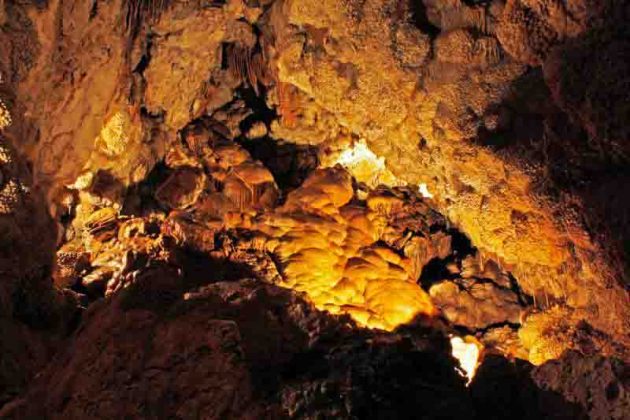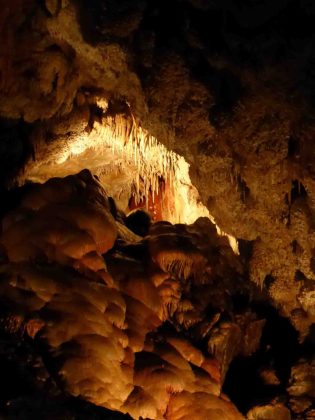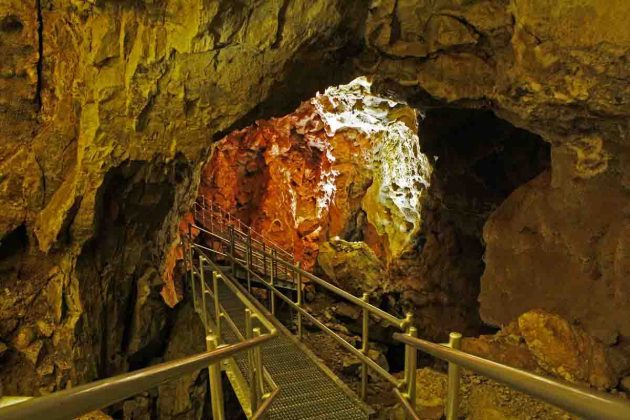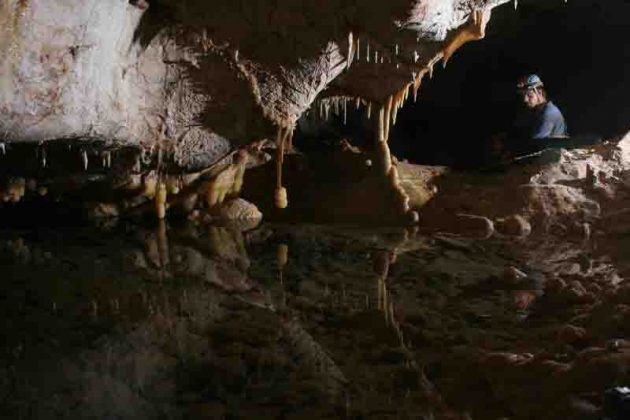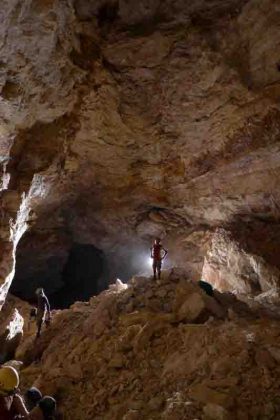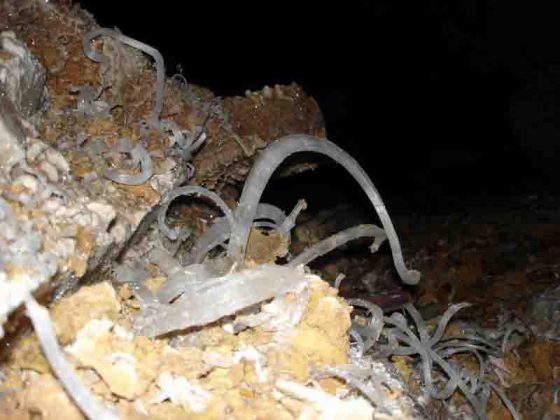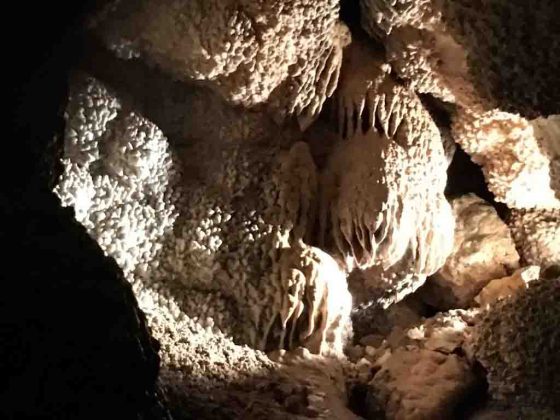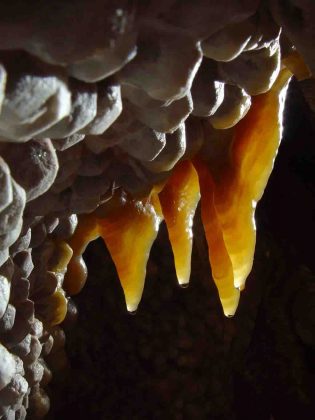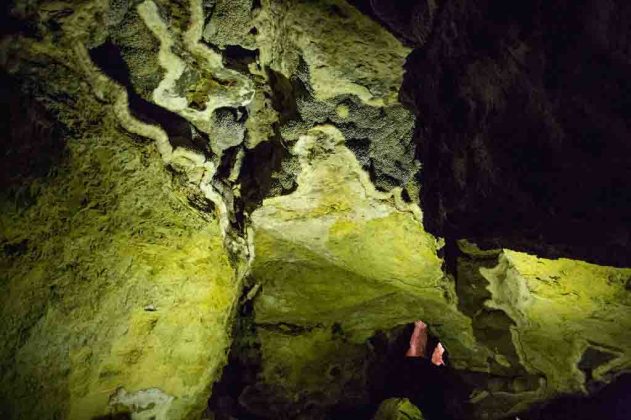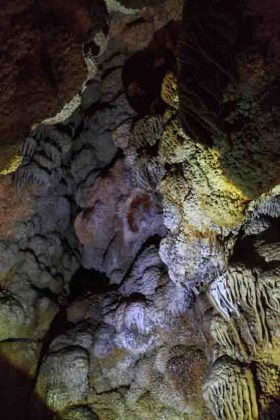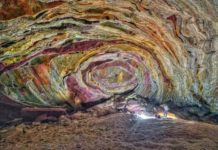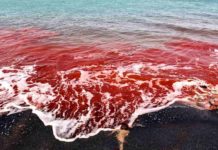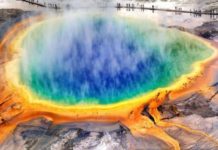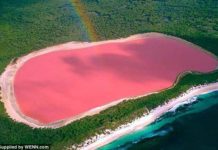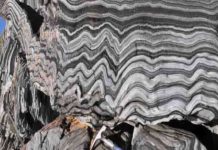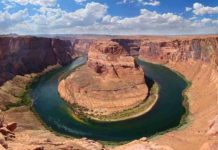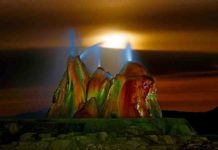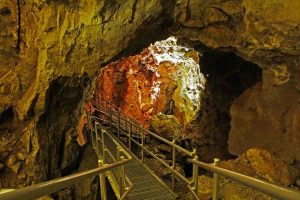
Jewel Cave National Monument contains Jewel Cave, currently the third longest cave in the world, with 181.89 miles (292.72 kilometers) of mapped passageways. It is located approximately 13 mi (21 km) west of the town of Custer in South Dakota’s Black Hills. It became a national monument in 1908
Jewel Cave was formed by the gradual dissolution of limestone by stagnant, acid-rich water. The water enlarged a network of cracks that had formed during the uplift of the Black Hills approximately 60 million years ago. The layer of calcite crystals that covers much of the cave walls was created by the re-deposition of calcite from water saturated with the mineral.
After the water that formed the cave drained, speleothems (cave formations) began to form. Jewel Cave contains all the common types of calcite formations, such as stalactites, stalagmites, flowstone, and frostwork, although not in the same abundance as other well-known caves. The dry parts of the cave contain some formations created by the deposition of gypsum, such as gypsum needles, beards, flowers, and spiders. Finally, Jewel Cave contains a very rare formation called a hydromagnesite balloon. Those are created when gas of an unknown source inflates a pasty substance formed by the precipitation of the magnesium carbonate hydroxide mineral.


